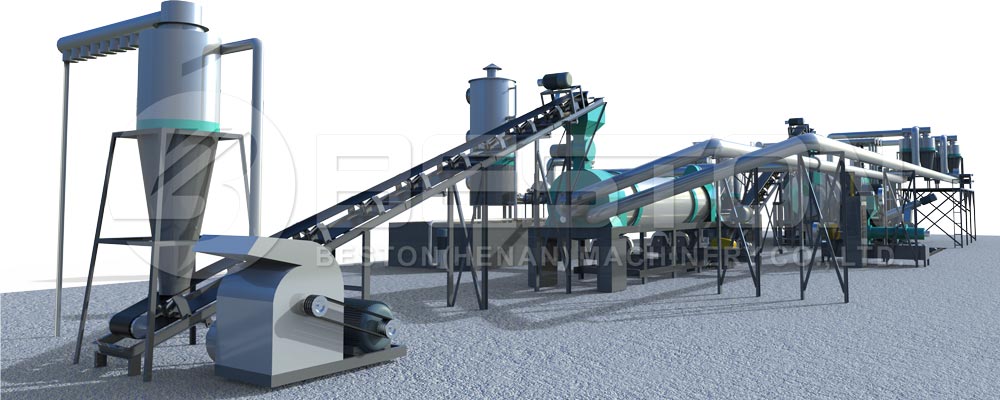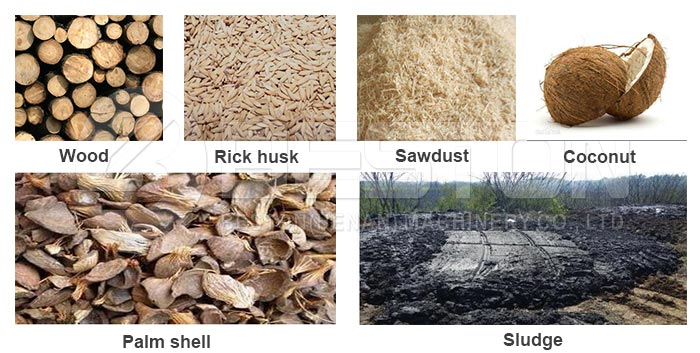Emission of gases such as carbon dioxide, methane gas and nitrous oxide as a result of human activities including the use of fossil fuels as a source of energy is becoming a great concern as this gases are known to increase the warming rate of the atmosphere leading to increased temperatures. This has led to the development of renewable sources of energy from biomass by thermal decomposition of the organic components making up biomass through the process of pyrolysis by a biomass pyrolysis plant.
Biomass is composed of wastes such as wood, paper and agricultural refuse which contain cellulose, lignin and hemicellulose which are decomposed by a pyrolysis machine to produce biofuel due to their hydrocarbon nature.
Types of biomass pyrolysis
Depending on the conditions under which pyrolysis is taking place, such as temperature, heating rate and biomass particle size, biomass pyrolysis is classified into three main categories.
•Slow pyrolysis
This process is used in the production of solid char and other liquid products at low temperatures and low heating rates. This process has disadvantages because the product output is very low and the quality of the product is poor. The process also requires a high amount of energy for the process.

•Fast pyrolysis
This is the common type of pyrolysis carried out by a biomass pyrolysis plant and it involves heating biomass at high temperatures in the absence of oxygen gas resulting in high yield of bio-oil and other liquid products.
This type of pyrolysis is characterized by high heating and transfer rates, short vapour residence time and fast cooling of the vapour resulting in high bio-oil production. Click here to know more about Beston.
Fast pyrolysis has various advantages including high efficiency, low energy requirements and low investment costs.
•Flash pyrolysis
This is a more developed form of biomass pyrolysis owing to the fact that it has very high heating rates and less reaction time.
It is characterized by high heating rates, high devolatilization rates and a very short vapour residence time.
However, this process has various disadvantages which include poor stability of the produced bio-oil and the presence of solids in the oil.
A biomass pyrolysis plant uses different types of reactors for the process, these include;
•Fixed bed reactors
This type of reactor is made of bricks, concrete and steel.it consists of a fuel feeding system, ash removal system, gas cooling and exit system and a cleaning system.
It employs a countercurrent system whereby the solid waste is directed via a vertical shaft into the reactor and the gas resulting from the decomposition moves upwards. The gas is then cleaned and cooled by the gas cleaning and cooling systems by use of wet scrubbers and dry filters which then exists via the gas exist system.
This type of reactor is employed in the fast pyrolysis process. It consists of a fluid-solid mixture obtained by passing fluid that has been pressurized into a solid substance making it have fluid-like properties. It is characterized by rapid heat transfer rates. There are two types of fluidized reactors;
i.Bubbled fluidized bed reactors
It uses heated sand as the solid medium which will heat the biomass decomposing it to biochar, bio-oil and gas. This type of reactor has a high biomass heating rate produces high-quality bio-oil.
The residence time of vapour is controlled and thus char does not accumulate in the reactor bed.
ii.Circulating fluidized bed reactors
This type of reactor also uses heated sand as a solid medium and the working process is similar to that of a bubbled fluidized reactor except that it has a shorter residence time of the vapours and gas resulting in accumulation of char increasing the content of char in the produced bio-oil. More about biochar production equipment here.
•Ablative reactor.
This type of reactor used a heated reactor surface as a means of heat transfer where biomass is forced on the heated reactor surface resulting in the production of oil and vapours due to the heating process.
It is characterized by good heat transfer rates and high heating rates of the biomass.
•Auger reactors
Here, biomass is passed through a heated tube where it is consequently devolatilized and gas is produced. This results in the production of char and bio-oil.

Process of biomass pyrolysis.
Biomass is dried to reduce the water content which can adversely affect the quality of the final product such as stability. This is then ground and fed into the reactor where it is heated resulting in the production of char which is quickly separated by use of cyclones to prevent vapour cracking. This is followed by the rapid cooling of the gaseous products formed using a heat exchange system or by the bio-oil produced which are then collected. See more types of charcoal making machine here.
Uses of various products resulting from biomass pyrolysis
1.Biochar is used for agricultural purposes to increase the yield of plants.
2.Bio-oil production is used as fuel in boilers, burning furnaces, and also in the production of various chemicals such as acetic acids.
3.Syngas consisting of hydrogen and carbon monoxide and other hydrocarbons is used as a renewable source of energy in internal combustion engines.